In everyday life, a bicycle is one of the most convenient and economical means of transportation. But despite its ease of management, not everyone has the skill to ride it. Today we’ll talk about how to learn to ride a bike.
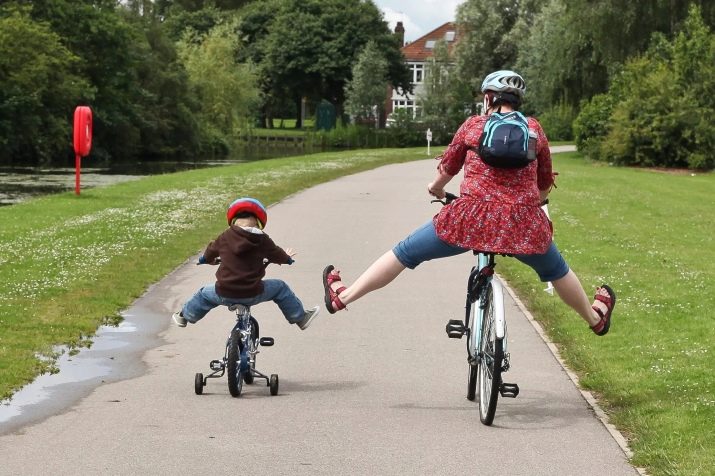
Basic Rules
Before you start learning, you need to remember that the main thing is well-adjusted seat. Proper adjustment will allow you to rest your foot on the ground at the beginning of the movement. In order to ride a bicycle, you will need special clothes.
After all the preparations, you first need to learn how to ride a bike. To do this, go on one side of it, holding one of the hands on the steering wheel.
Such an exercise is necessary in order to see how the bike will behave when tilting the body and turning the arms. When you feel the bike, you can proceed to ride. When boarding a bike you need to relax and not panic. Your body weight should be distributed evenly across your limbs. You need to move smoothly, trying to avoid sudden movements. Try to look forward, not under your feet.
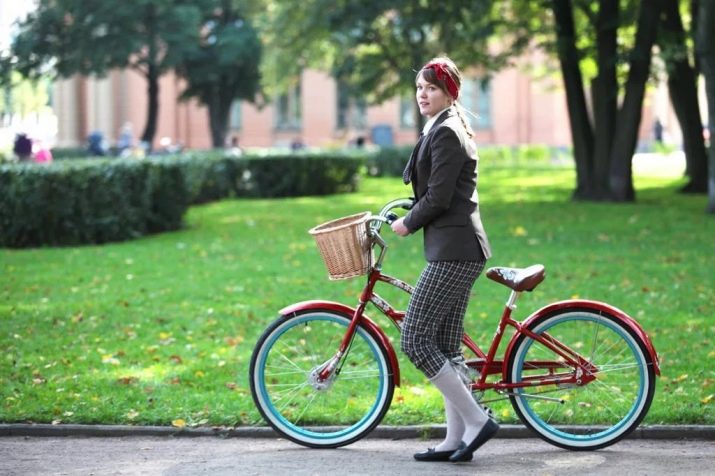
Learning Features
You can learn to ride a bike at any age. Consider the difference in the education of adults and children.
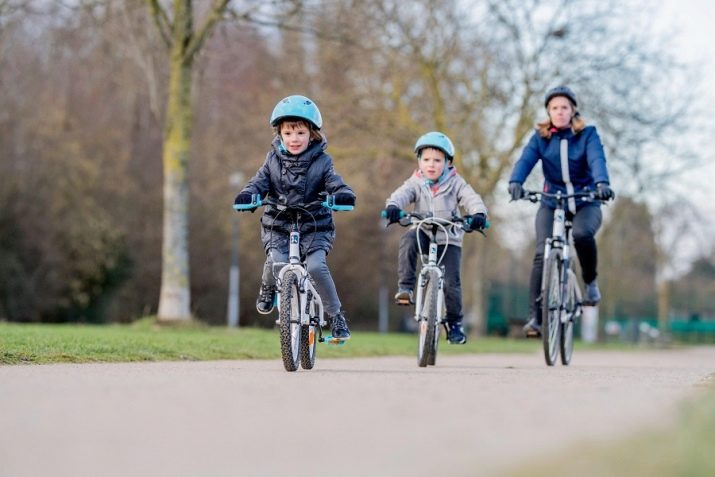
Child
If you decide to train your child to ride a sports bike, then you can start at two years old. To begin with, a child can start training on a bicycle with extra wheels. By four years, you can transfer to a two-wheeled analogue. If you are not sure that your child will be able to ride it, then you can use analogues for training.
Before you put your child on a bicycle, you should think about its safety.To do this, it is recommended to purchase a helmet, as well as protection on the elbows and knees. Do not forget about shoes. It should be closed and securely fix the leg.
When all the precautions have been taken, training can begin.
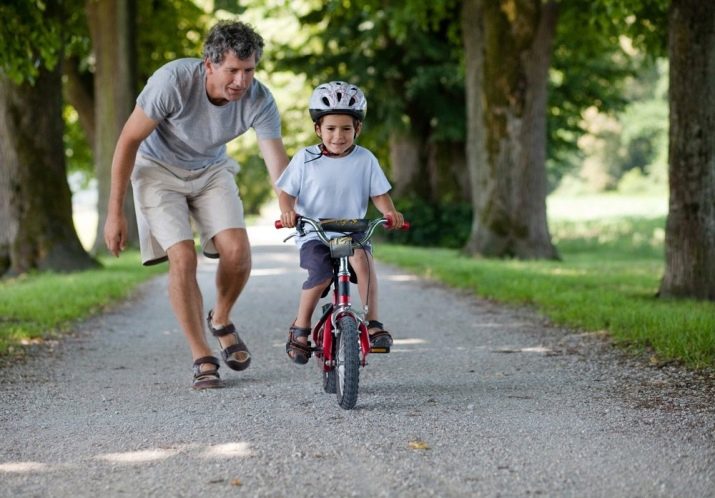
First, choose a vehicle that is suitable for the child. Determining whether the model is right is pretty straightforward. Make sure that when riding a bicycle, the child’s legs reach the ground and are in a slightly bent position. Put the baby behind the wheel, and put his feet on the pedals. Supporting the child on the side, roll the bike. So the cyclist will quickly learn to maintain balance.
For the first training, an apartment is suitable. In a familiar environment, the child will be more comfortable.
When the baby feels more confident while in the saddle, you can take walks in open areas such as a park.
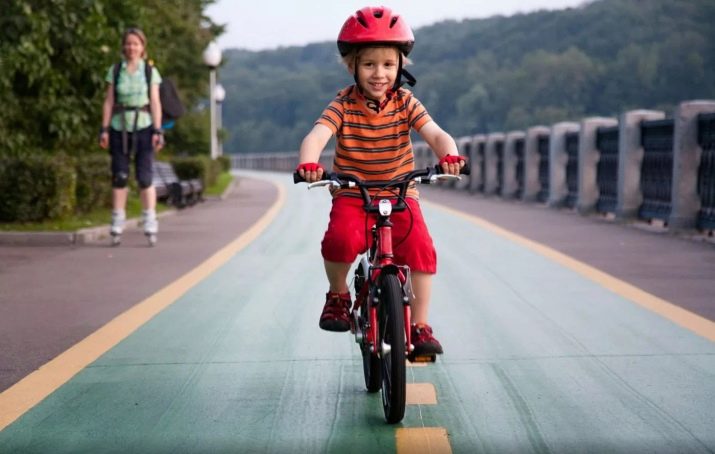
But it should be remembered that when teaching a child to ride a bicycle, increased attention to detail is required:
- while riding, make sure that the child keeps his back straight;
- skating should be excluded after eating;
- children under 13 years old can travel up to ten kilometers, children under 15 years old can increase the distance to twenty kilometers.

Adult person
Unlike a child it’s much easier for an adult to learn the skill of cycling. This is due to the fact that the muscle system of an adult is much better developed. But in stressful situations, an adult can become very squeezed, and such a simple incident as a fall can discourage the desire to learn further.
The first thing an adult needs to learn is to maintain balance while sitting on a bicycle.
To do this, you can lower the bike seat down and remove the pedals. So a person can lean on the ground and not get injured.
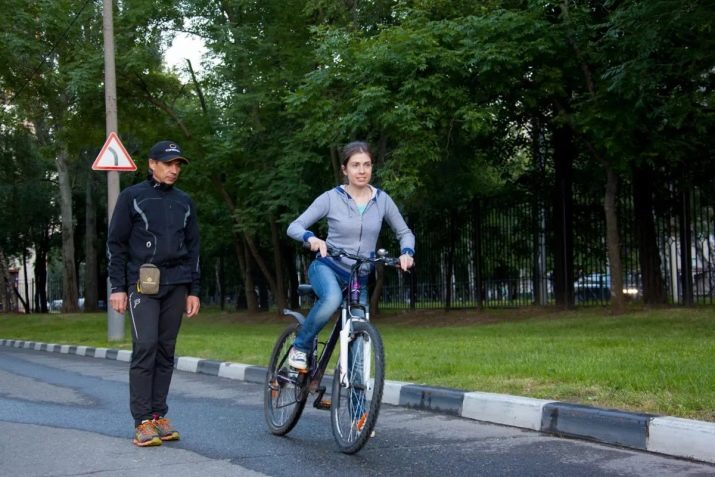
Training should begin on a flat road.
When a person feels confident, then you can go to areas with a more uneven terrain. You can return the pedals only when the student has mastered the simplest maneuvers. You should be aware that you should not turn the pedals when cornering, as there is a greater risk of falling off the bicycle. To maintain balance, turn the steering wheel toward your tilt.

If you are a beginner, then do not overload yourself immediately. At first, it is recommended to drive no more than a kilometer per day. When you feel that the distance is too small for you, you can increase the distance. When a person has learned to maintain balance, he can try to drive on his own. If the student is still unable to deal with the pedals, then you should stay close to him in case the person loses control or forgets about the brakes.
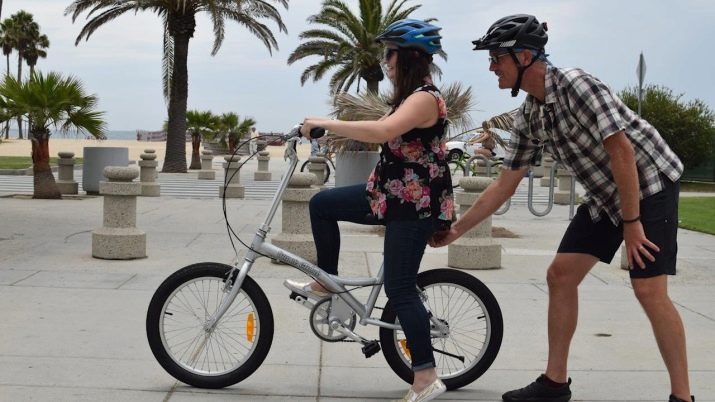
The technique of riding different bicycles
There are a large number of bike models. Each of them has its own characteristics in management. If you start training on a two-wheeled bicycle, you should adjust the saddle so that when you touch the pedal your leg is straight. Then you need to understand how the brakes work. Begin with the rear brake. Sit in the saddle and, while holding the rear brake handle, try to maintain balance. Just take your feet off the ground. So you can learn the principle of maintaining balance on a 2-wheeled bicycle and understand whether it is comfortable for you on the seat.

To start moving, you need to push off the ground. If you need to get off your bike, or you feel that you are falling, you should brake. The bike should always ride straight. If you understand that the technique is leaning to the left, then you should turn in the same direction. Turning can be done both at high and low speeds. If you are moving slowly, you can make a turn using the steering wheel.
If you want to learn how to ride a speed bike, then you should choose the technique regarding your height and weight. So you ensure maximum comfort.
A distinctive feature of high-speed bikes is transmission. The main function of such a device is to facilitate the movement of a cyclist. Thanks to them, a person will be able to freely overcome his path.
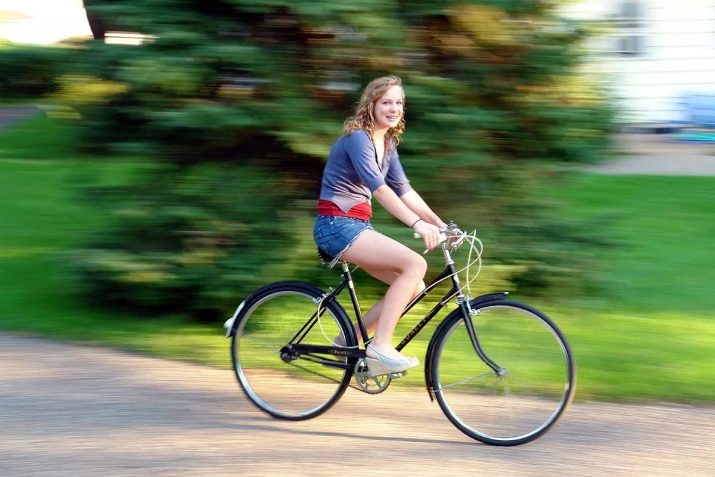
There are several rules for using transmissions:
- if you start the climb, you should pre-select a mode that will reduce the speed;
- watch the chain carefully - there should be no distortions;
- try to switch gears only while driving;
- try to avoid sudden gear changes, wait until your vehicle starts to fully work in the selected mode, and then switch;
- to avoid breakdowns and malfunctions, you should not start the movement with the highest speed transmission.

If your choice fell on a mountain bike, then it should also be selected according to your height and weight.
On average, this vehicle weighs from 7 to 20 kilograms. The difference in weight depends on which model is presented. If the bike has a mass of up to 10 kilograms, then this is a typical carbon model. If the bike weighs more than 13 kilograms, then such a model is suitable for downhill or freeride (descent from unprepared peaks).
There are three types of mountain bikes. Choose a model based on your interests.
If your choice fell on hard Mountain bike, then it should be noted that there is no suspension in it, which means that such a bicycle will not require frequent repairs. This model is better to use on simple roads, as driving on the road will bring you discomfort. To date, the most expensive model among mountain bikes is considered 2-suspension. But despite its high cost, such a bicycle is perfect for off-road driving due to the presence of suspension in front and rear.
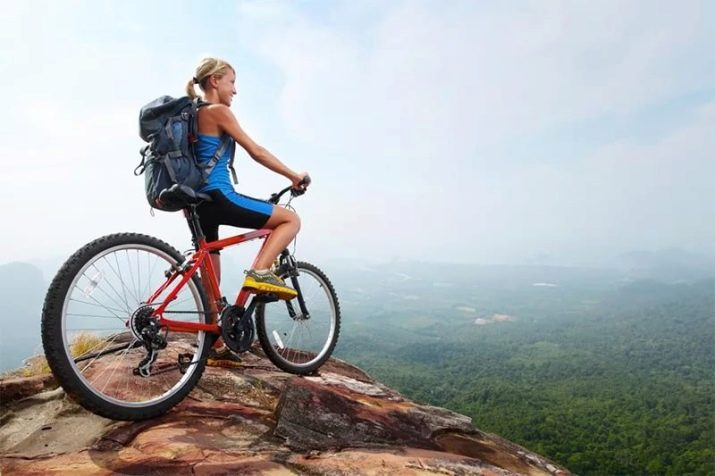
For beginners, a hardtail model is recommended, as it has a rigid rear wheel and front suspension.
As already noted, mountain bikes are designed for off-road driving, and therefore an integral part of the equipment is a helmet that should not overwhelm your ears and obscure your view. A distinctive feature of mountain bikes can be called their very structure, namely: the presence of mud gaps. This design is ideal for off-road driving. The bike is equipped with tires that have a combined or off-road pattern. This method of protecting the tire from the inside will prevent damage to the wheels due to the difficult route.
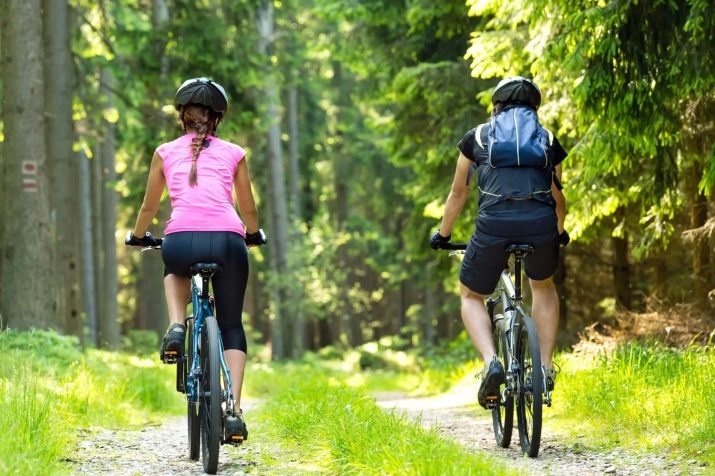
Mountain bike wheels are equipped with high-strength rims that can withstand ever-increasing loads. Standard equipment for mountain bikes is the presence of two suspensions - on the rear and front wheels. But having only the front wheel suspension is also allowed. When driving a mountain bike, there are a few things to keep in mind.
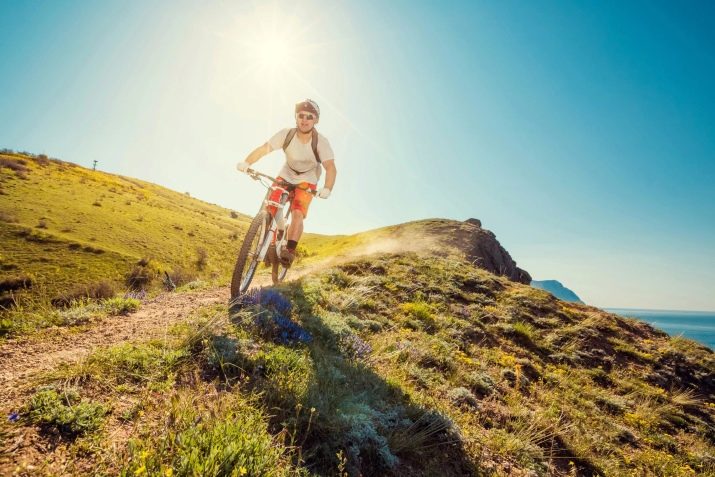
When climbing a steep slope, you may notice that the front wheel comes off the ground. To avoid this, shift your weight forward. This will help to shift the center of gravity and establish a balance between the wheels. During the descent, you may have a problem of the opposite nature. You may feel that your bike may roll forward. To avoid this, you need to step on the pedals, while keeping your knees bent, and slide your body back a bit, thereby moving to the edge of the seat.
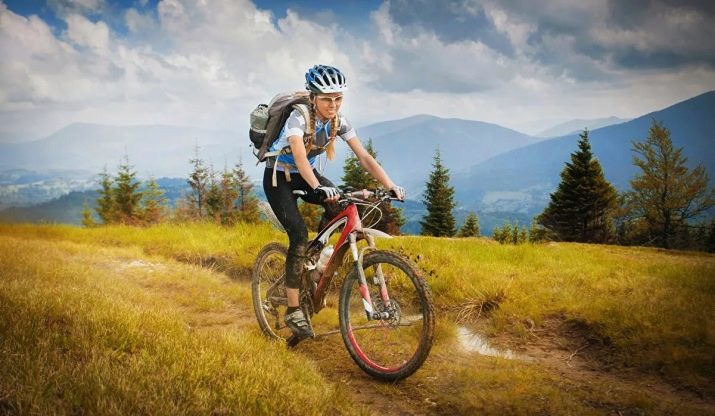
Recommendations
We list a few recommendations of specialists who will be useful to a novice cyclist.
- When riding, one should be prepared not only physically, but also psychologically. No one is safe from injuries and falls. The main thing in cycling is the manifestation of perseverance.
- It should be remembered that at low speed it will be quite difficult for you to maintain balance. Therefore, try to maintain an average pace to facilitate the process of riding.
- No need to be clamped. From tension, your muscles will get tired faster, and your desire to ride a bicycle will quickly disappear. Smooth movements should be made.
- You do not need to squeeze the steering wheel with all your strength, but you should not let it go if you want to avoid injuries.
- It is forbidden to carry out sharp braking.
- If you decide to ride, then it is worthwhile to purchase a bicycle helmet. You must always ride in it to avoid injuries.
- At the beginning of your training, try to travel short distances. As you gain skill, increase the distance. But never forget that you should be comfortable.
- Your vehicle must be equipped for your comfort. Do not rush to ride a bicycle if something does not suit you. Try changing to another model.
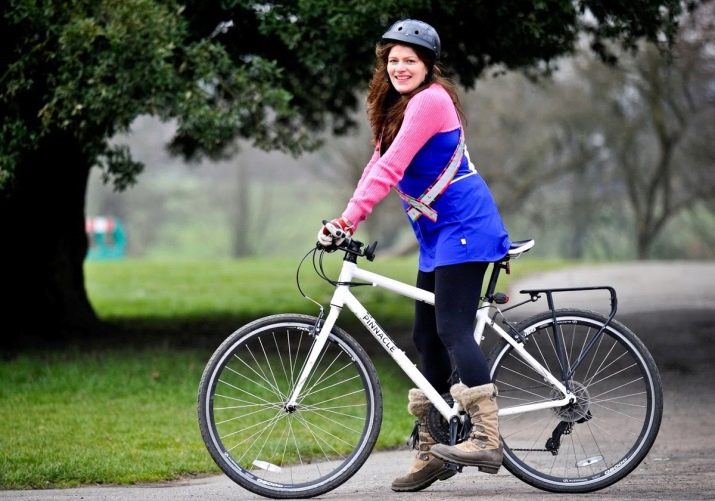
In the next video, you will learn the basic rules for beginners to learn how to ride a bike confidently.










